During a cholera outbreak in Guanajuato, Mexico in 1833, a number of naturally mummified bodies were interred.
Between 1870 and 1958, the human bodies seemed to have been unearthed. A municipal tax was in effect at the time, requiring the payment of a levy for “perpetual” burial. Some bodies for which the tax had not been charged were disinterred, while others—apparently the best-looking—were preserved in a nearby house. Guanajuato has a climate that can cause natural mummification, although scientific studies later revealed that some bodies had at least partially been embalmed.
It was in the 1900s that the mummies began attracting tourists. Cemeteries began charging people a few pesos to enter the building where bones and mummies were stored. Afterward, it was converted into a museum called El Museo de las Momias (“The Museum of the Mummies”). As of 2007, 59 of the 111 mummies were on display.


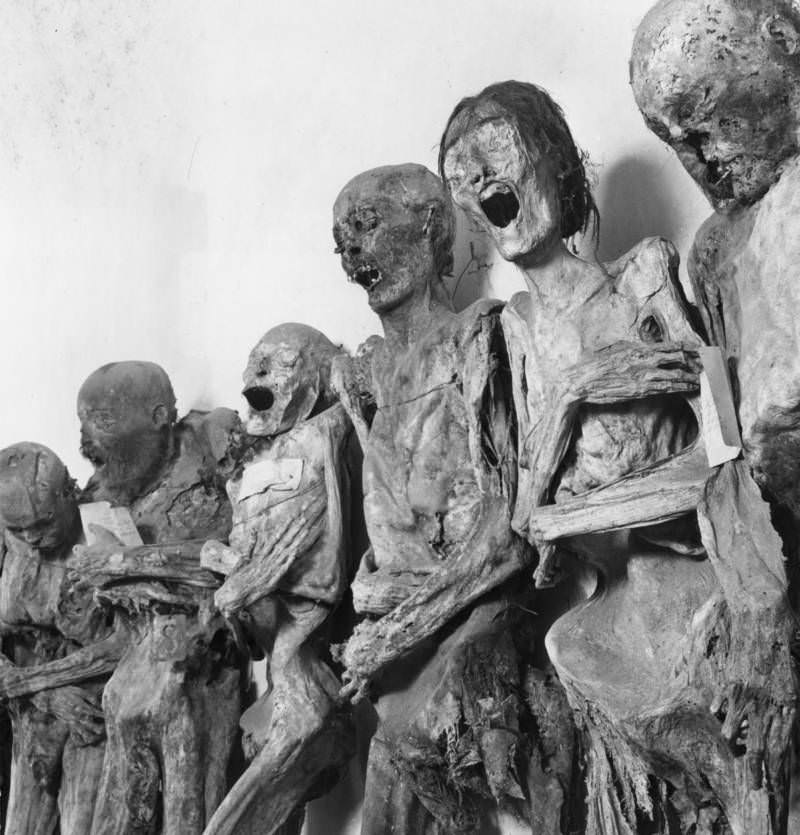
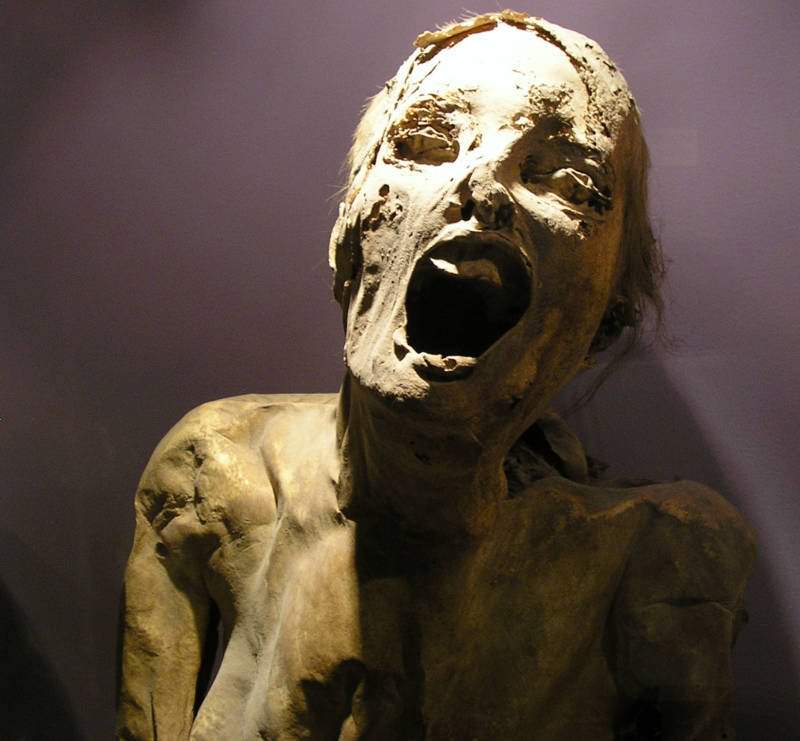
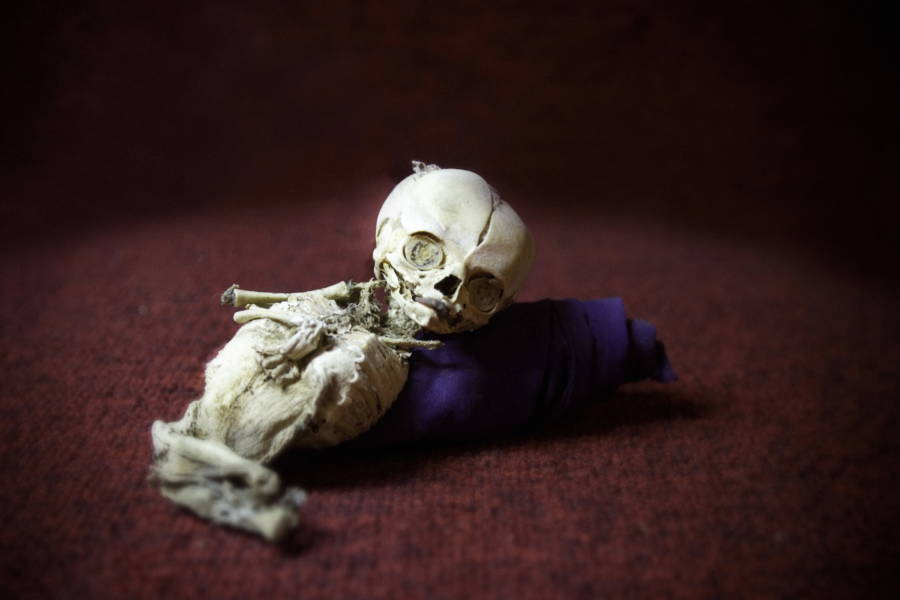
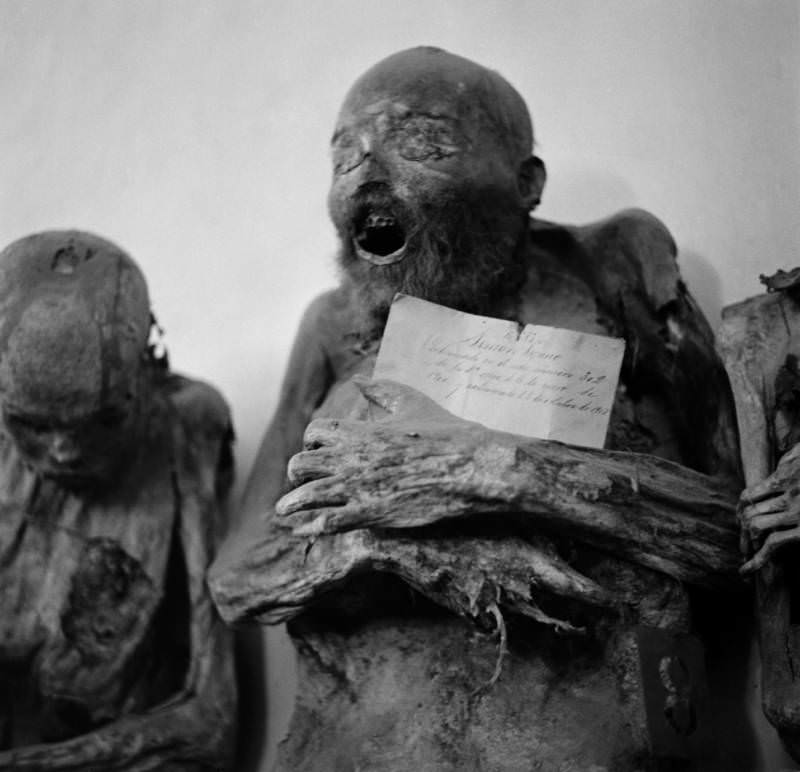
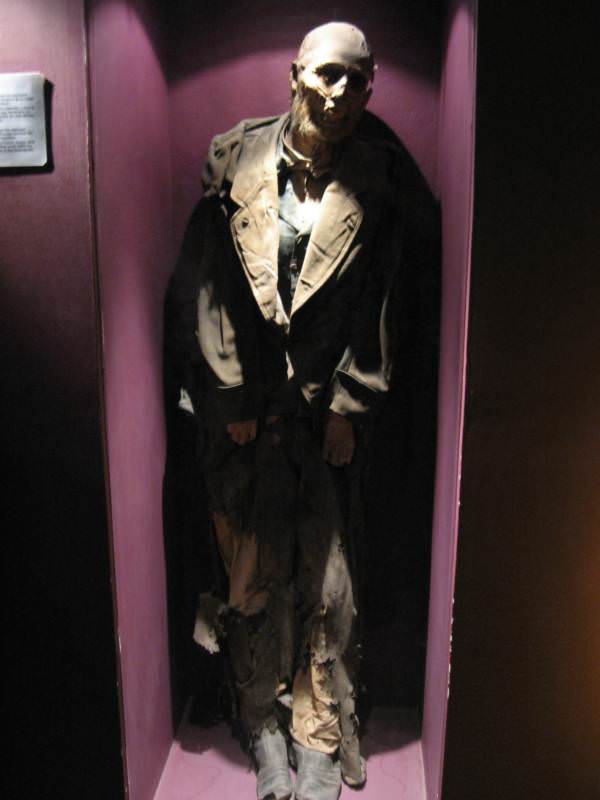
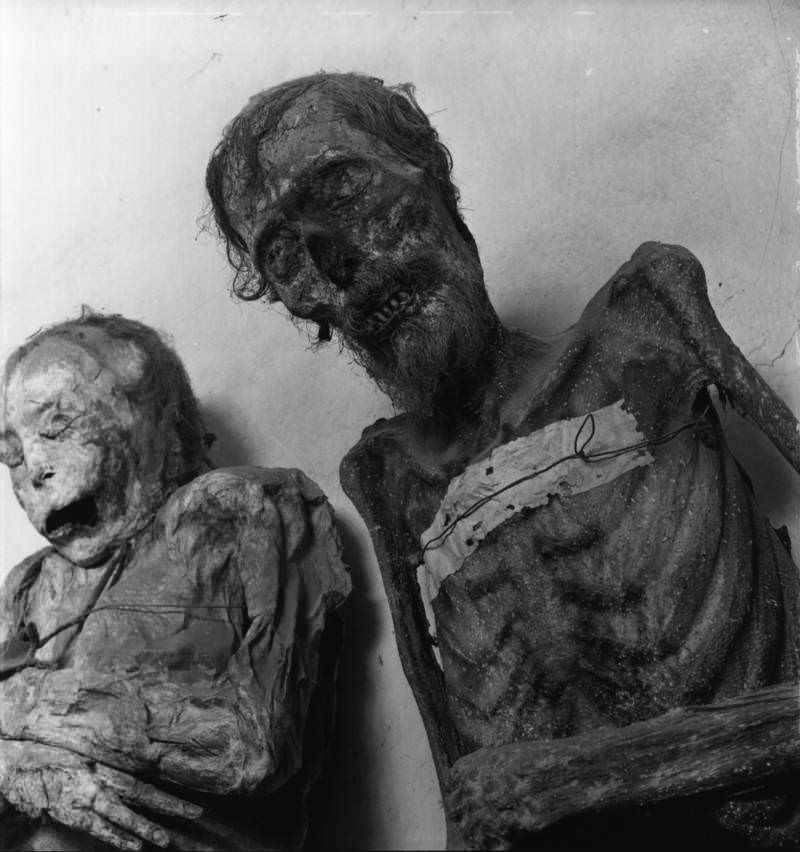
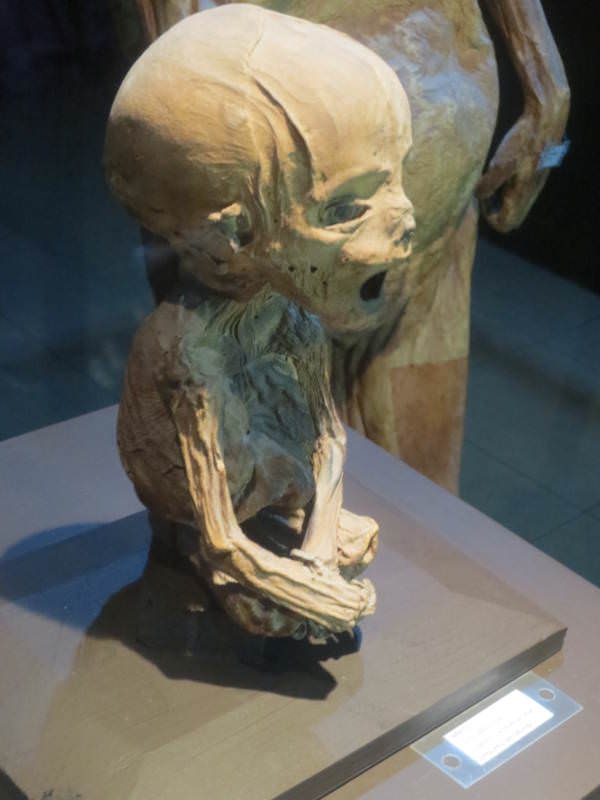
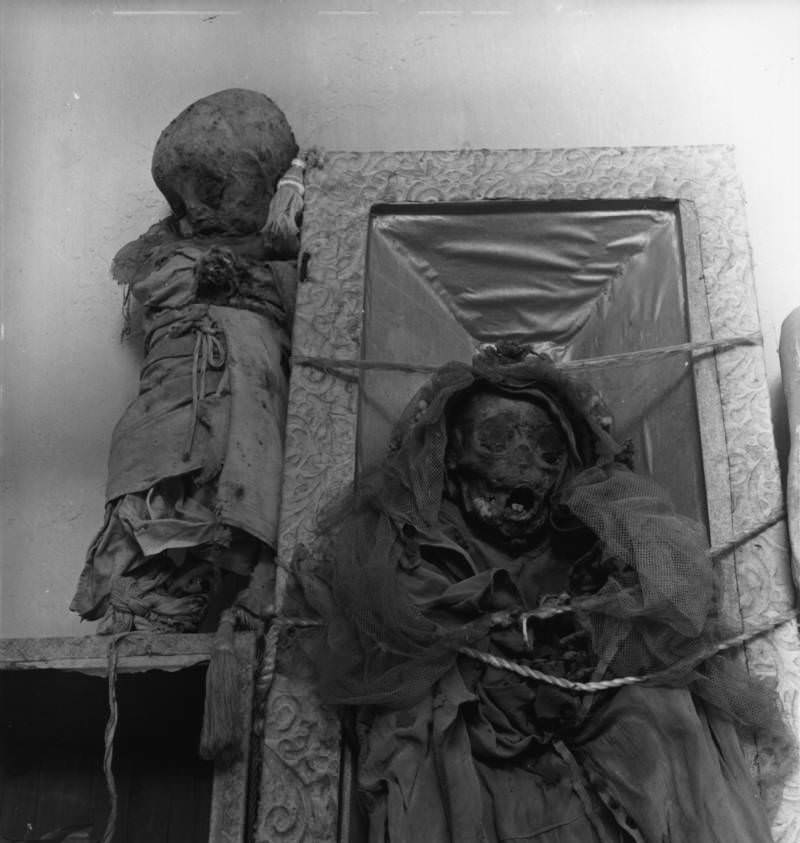
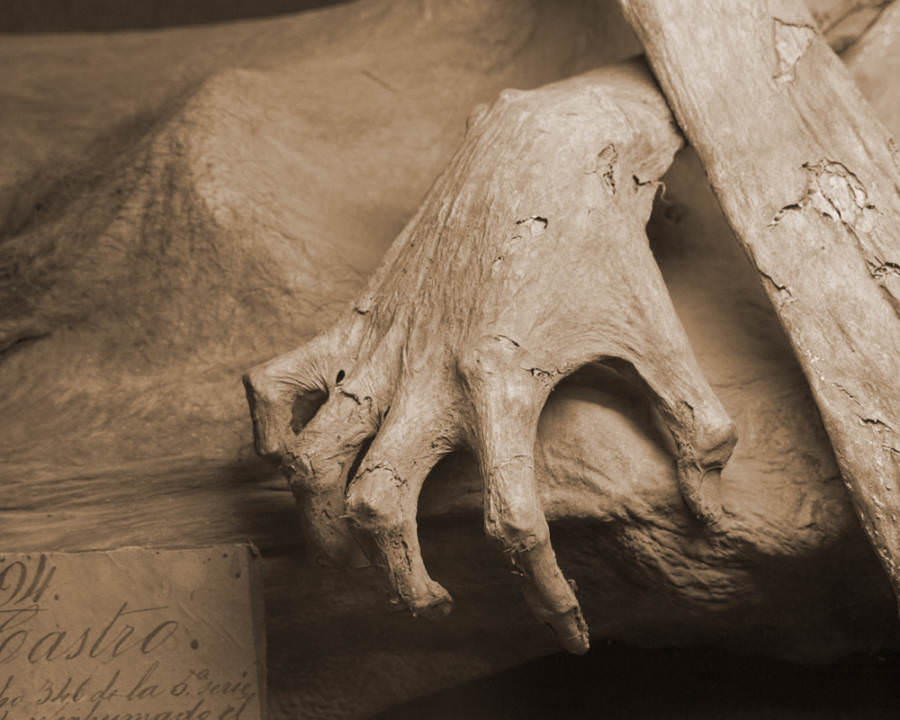
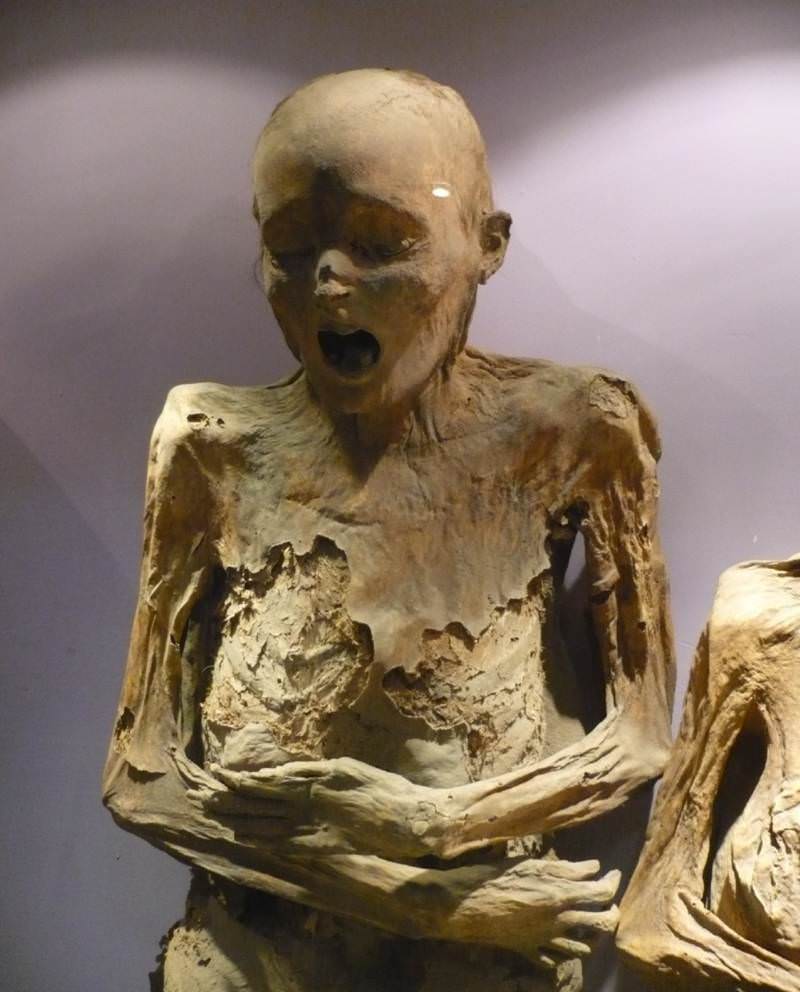
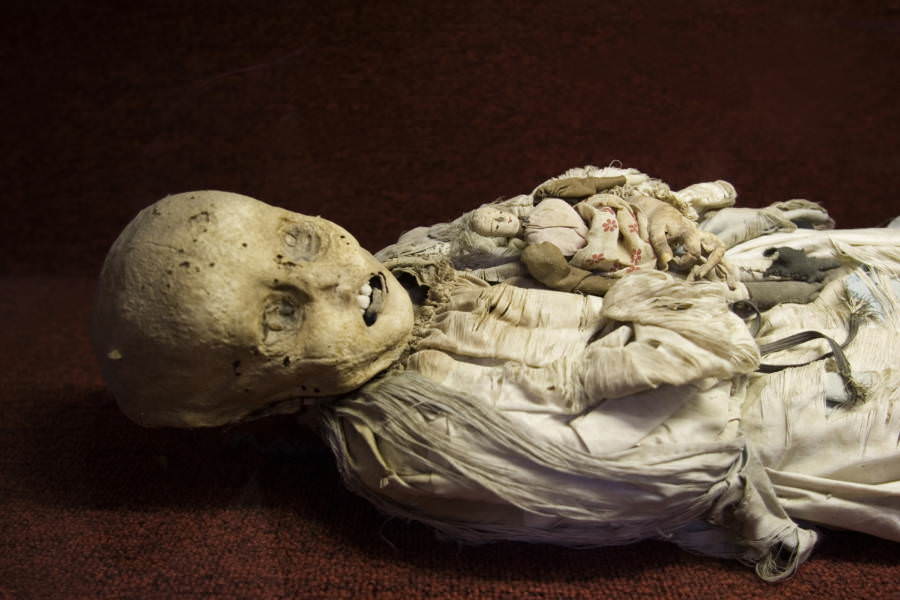
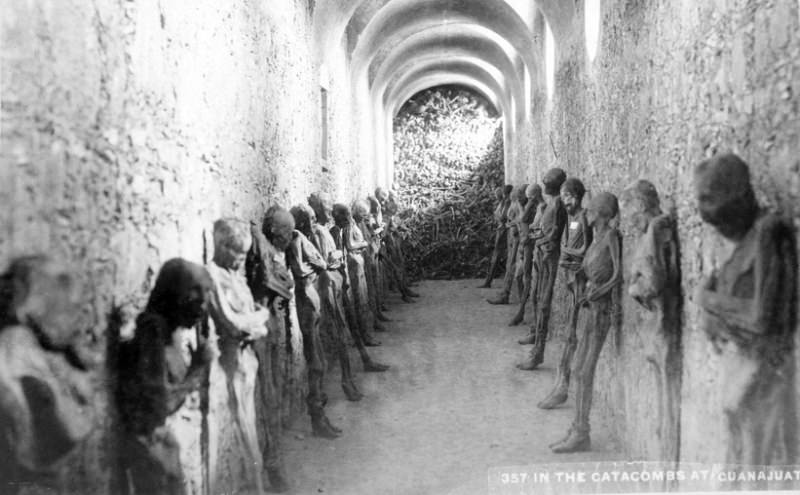
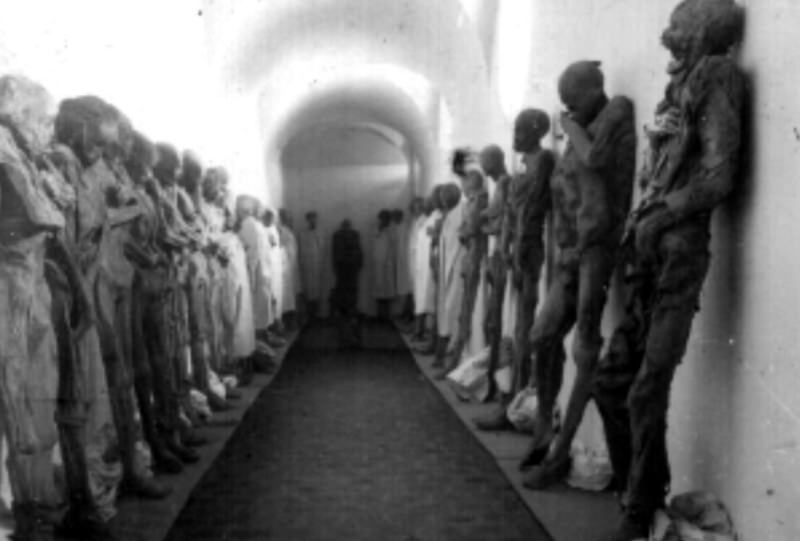
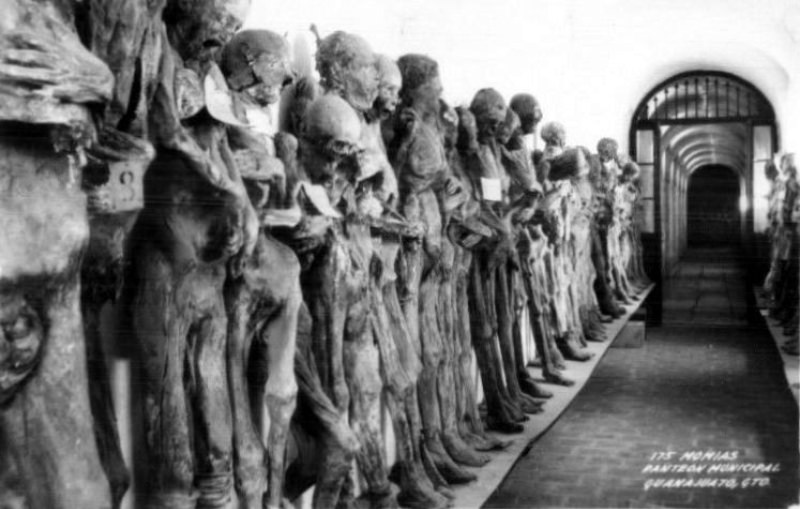
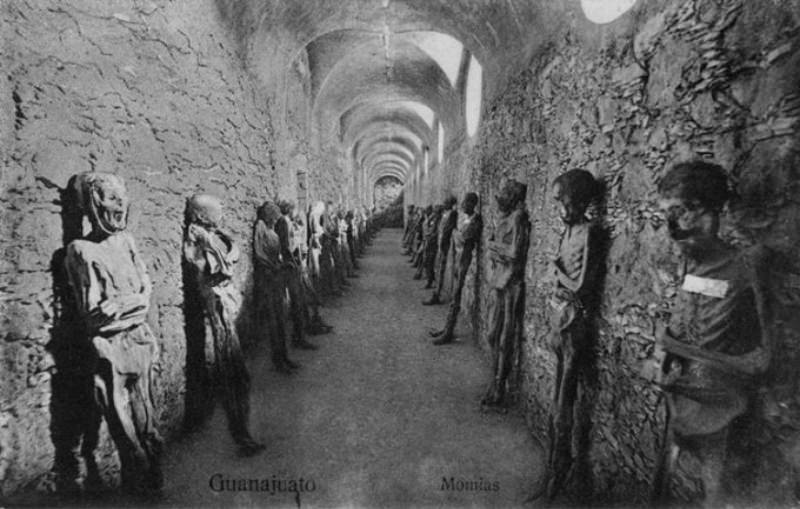
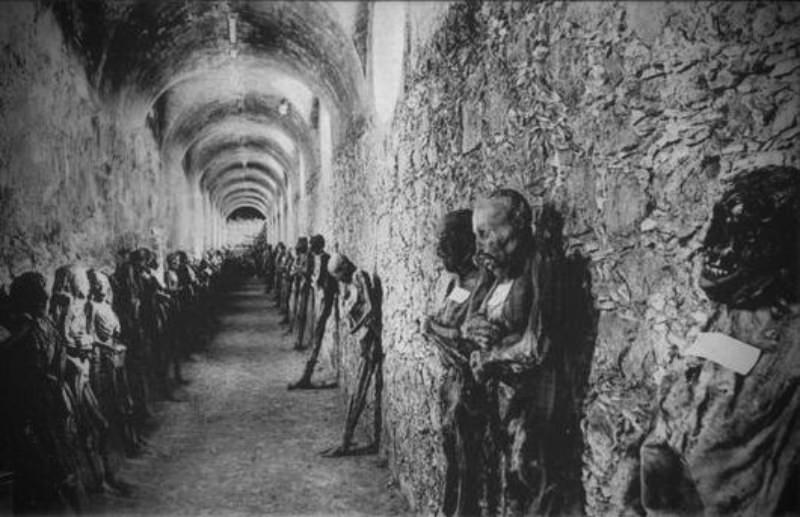
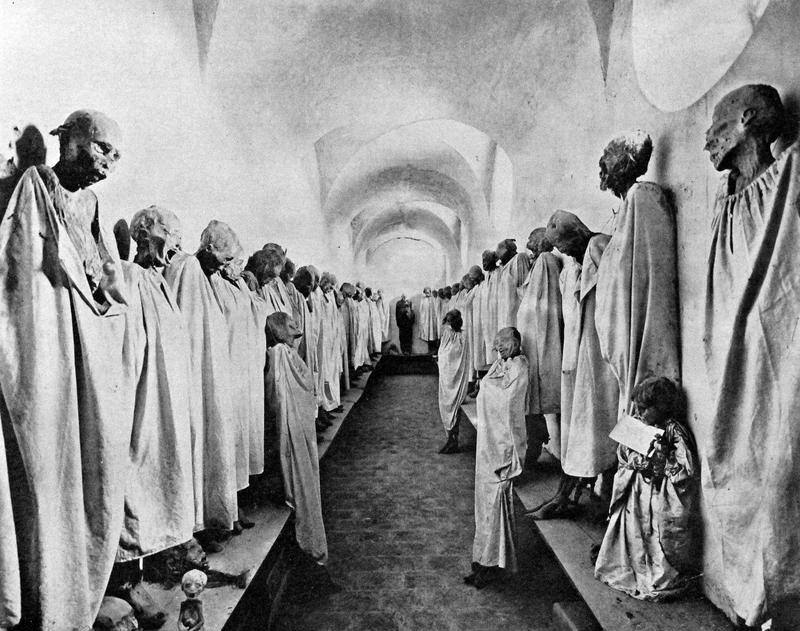
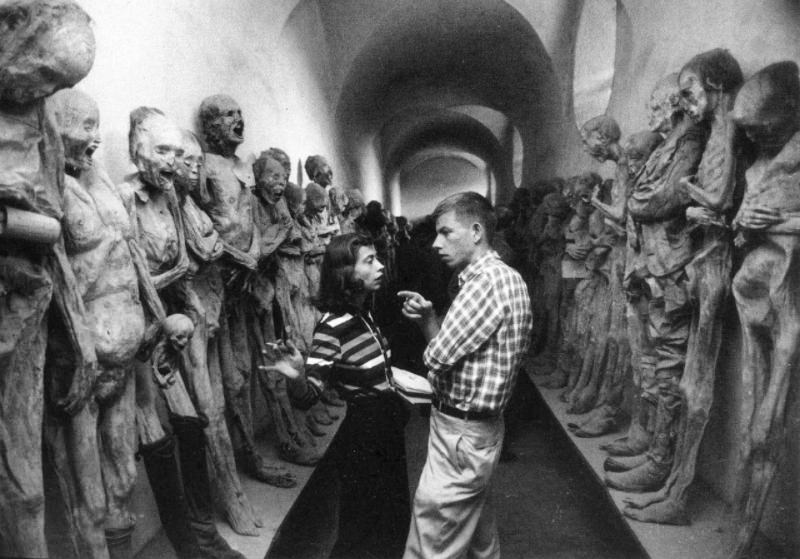
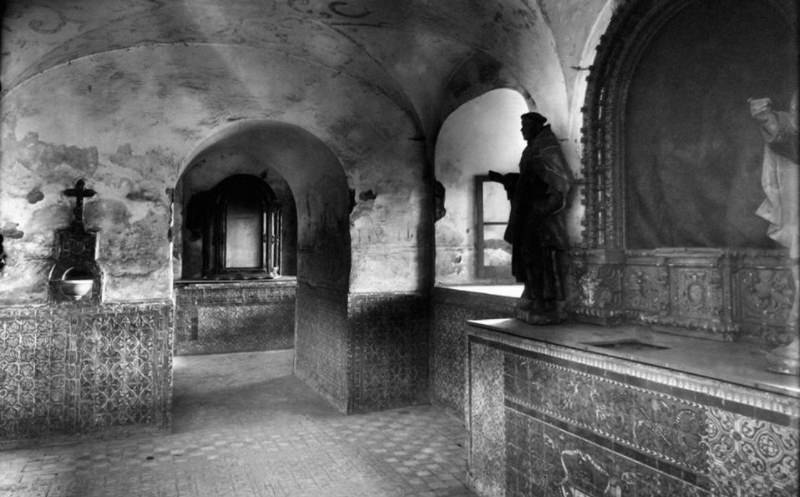
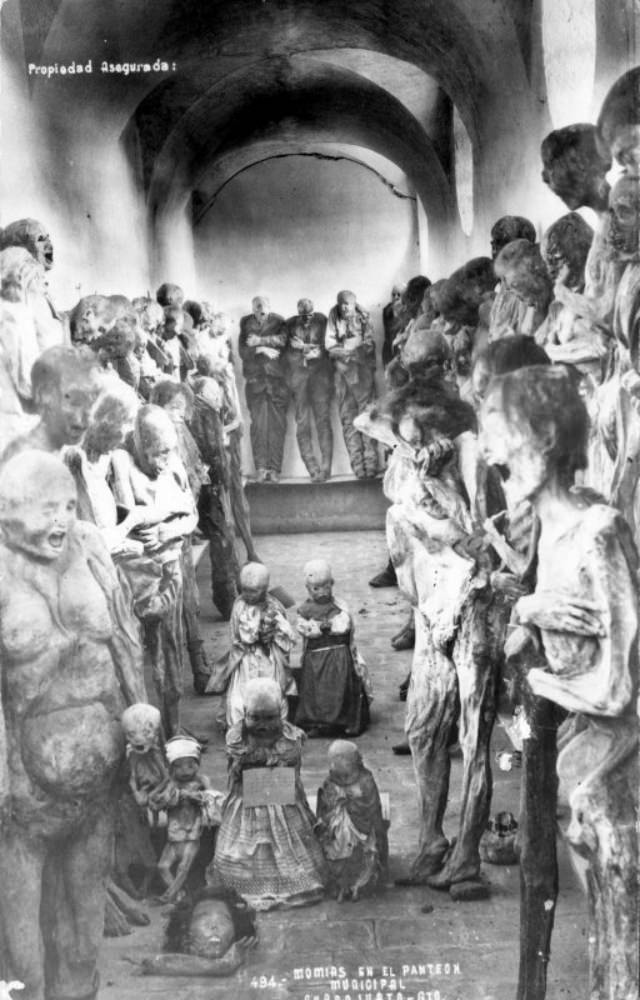
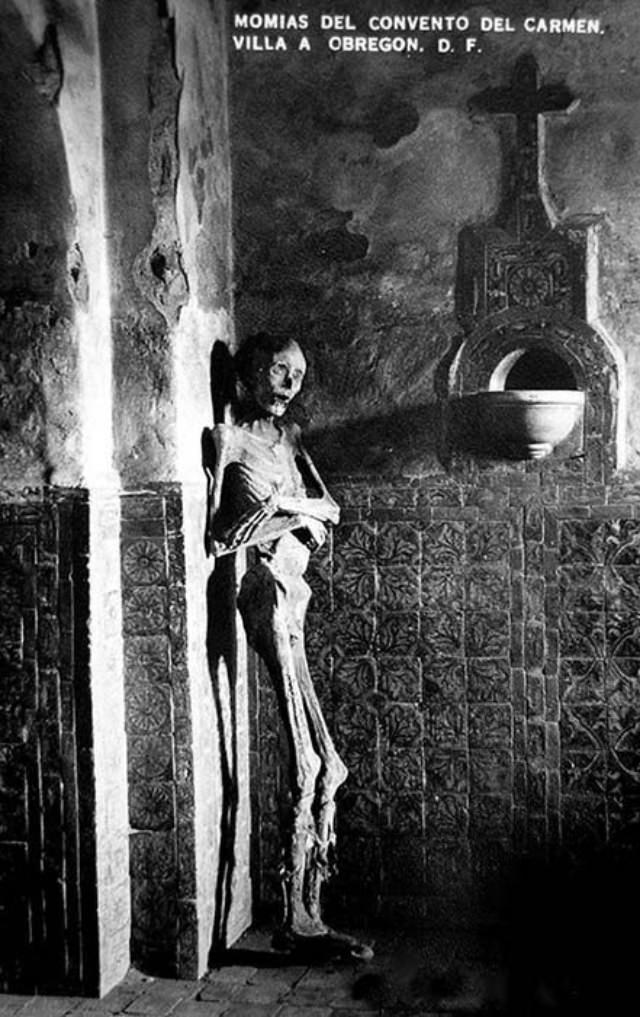
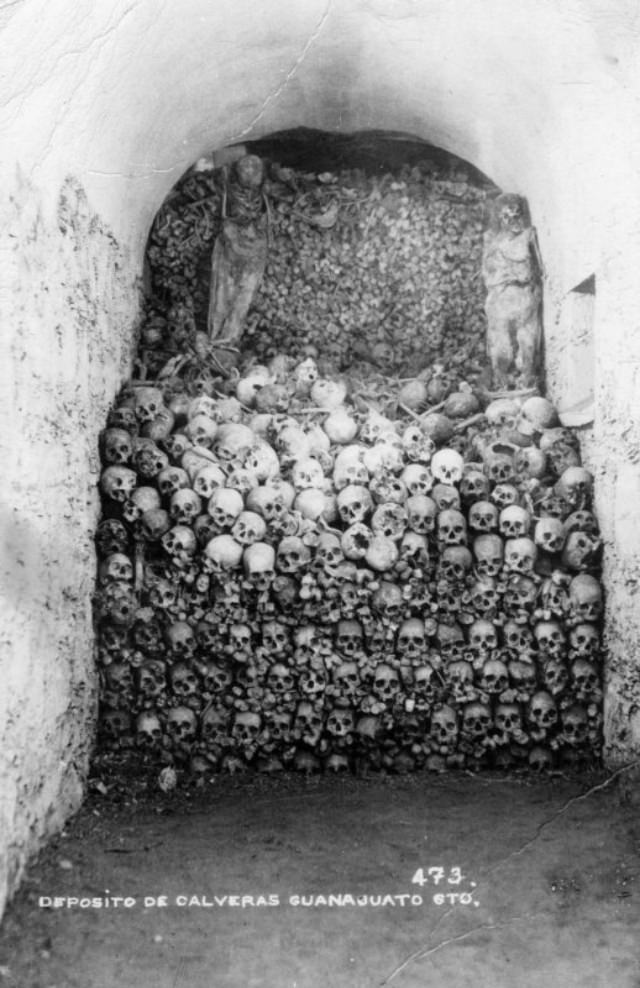
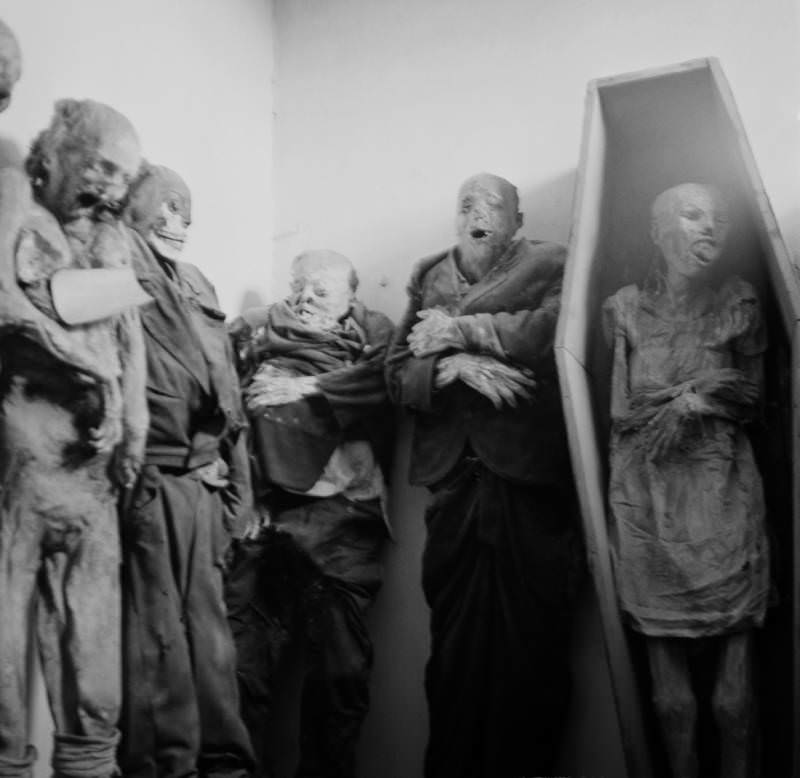
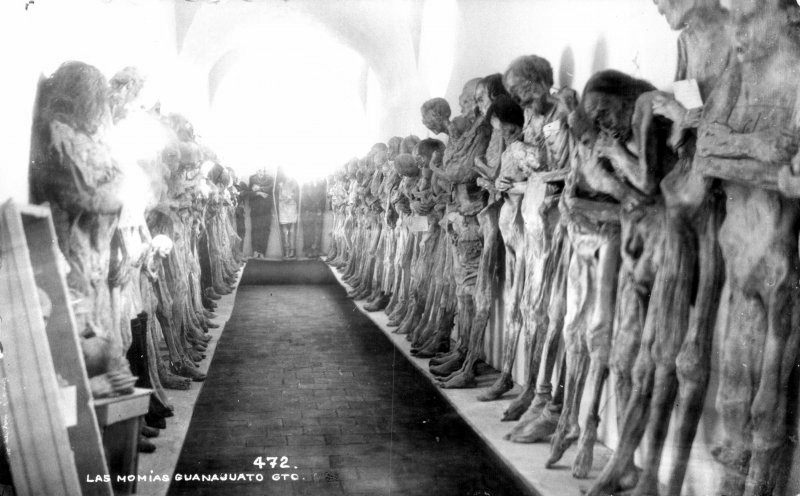




When I was a kid, I visited that museum. It terrified me. All I could think of was that they’d come to life like in Night of the Living Dead or Dawn of the Dead. Even the restrooms looked uncomfortable. Lighting was dim, and stall doors were so loud they could have woken the dead.